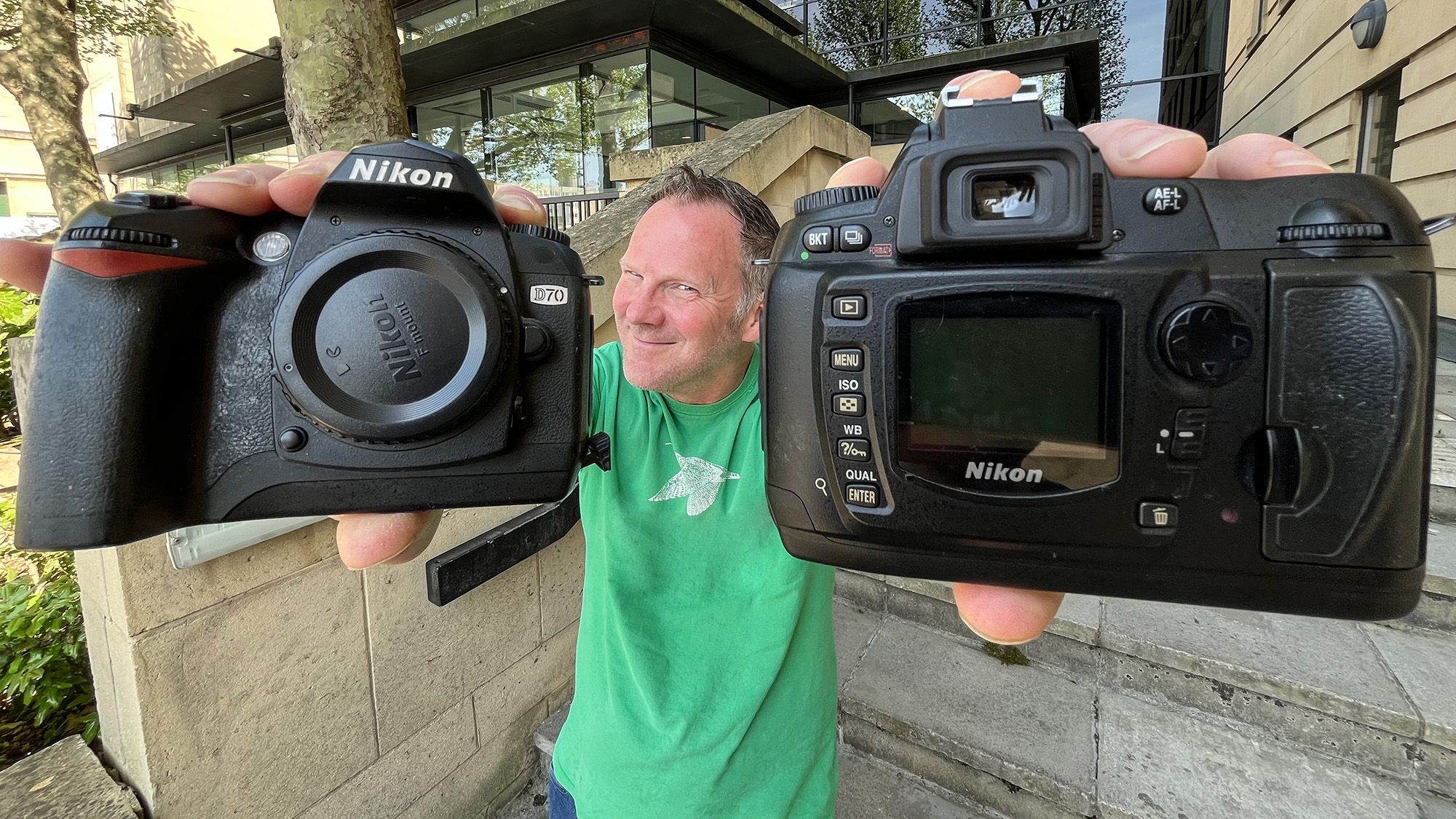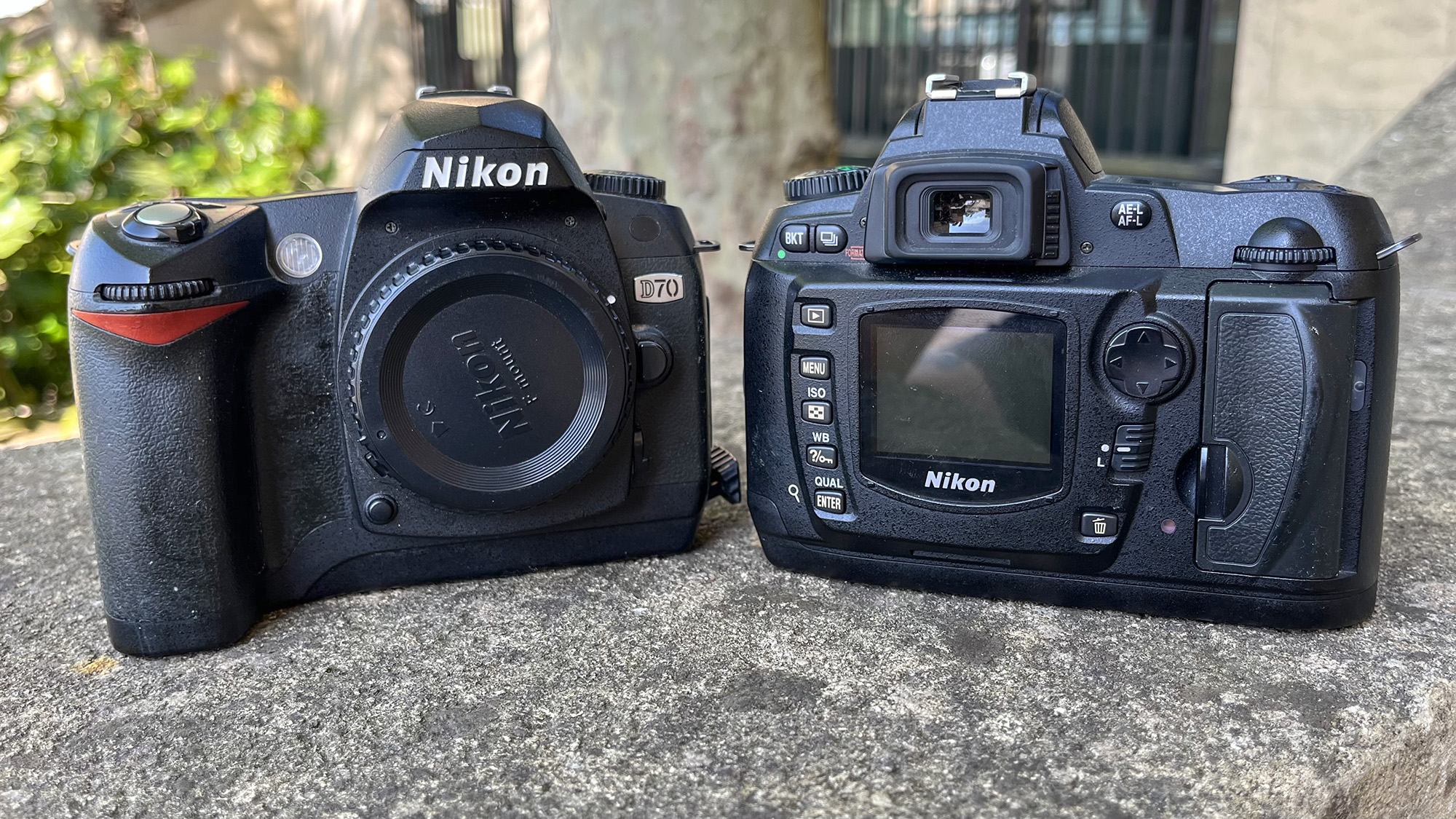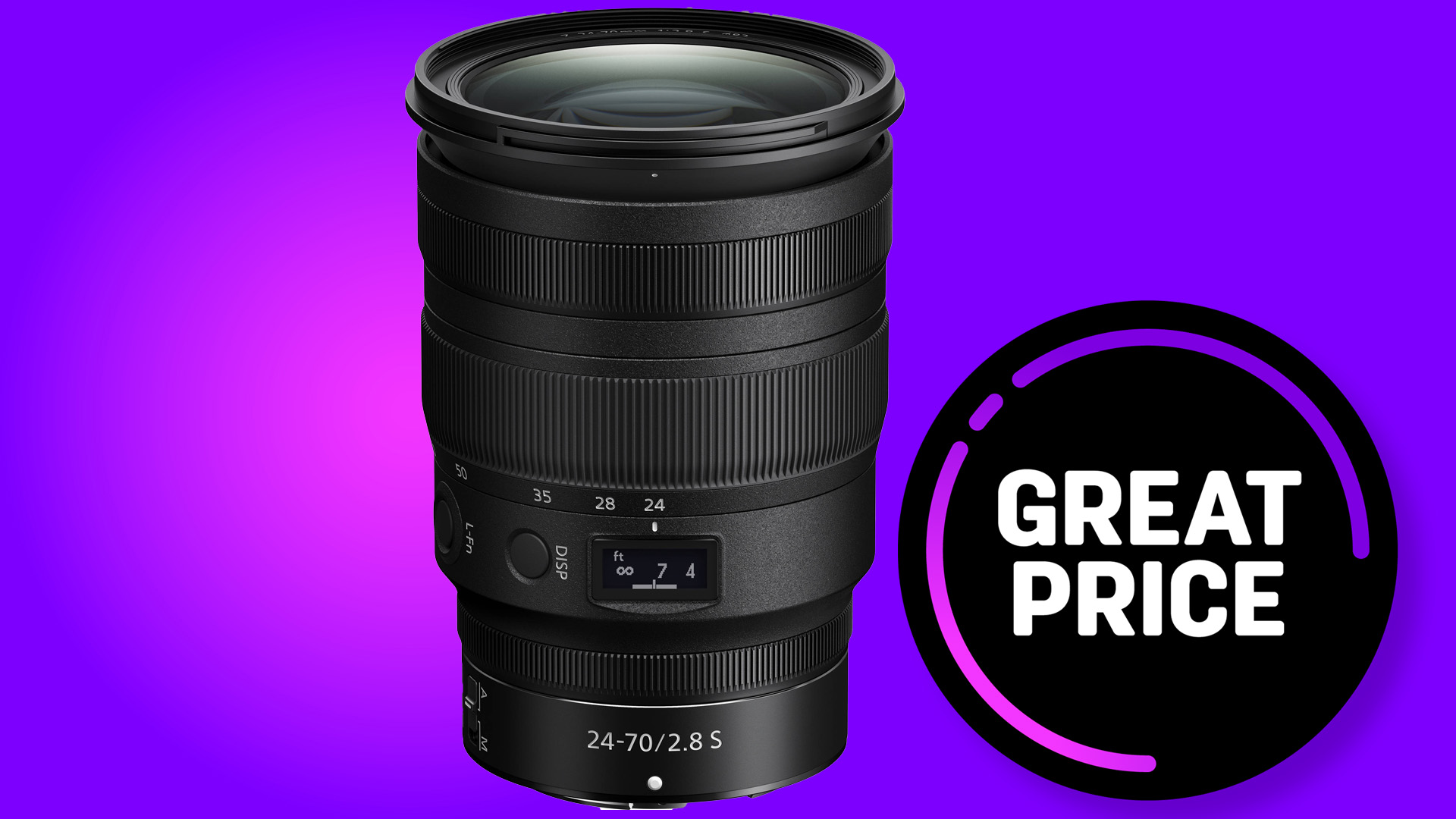I found a pair of Nikon D70 DSLR cameras in the cupboard. They’re a bit sticky and their specs are laughable, but back in 2004, they were all the rage
The Nikon D70's spec list seems every bit as old as the camera's 20-plus years, but it was a consumer titan of its day and is still an absolute legend

I was rummaging through Digital Camera World’s stock cupboard and came across, not one, but two Nikon D70 cameras. I’m not sure where the time’s gone, but last year was the 20th anniversary of this legendary little DSLR’s release. I say legendary because it was one of the best Nikon cameras back in 2004 and, pound for pound, arguably the best. Not only was it the spiritual successor to the Nikon D100 and a competitor to the Canon EOS Digital Rebel / 300D , but it was the first Nikon DSLR to cost under $1,000 (priced at $999). That made it one heck of a deal, given that the two-year older Nikon D100 was twice the price, and the D70 was widely regarded as the better camera.
In fact, looking back at these pioneering DSLRs, I’m reminded of just how well-priced many of today’s cameras really are. We’re arguably living in the golden age of the best cheap camera, but I digress. The Nikon D70 was built around a DX-format (APS-C) 6.1-MP CCD sensor, had a fast 1/8000 sec max shutter speed (1/500 sec sync speed), an ISO range of ISO200-1600, a five-point phase-detection AF system, 3-fps burst shooting, a 1.8-inch rear LCD (fixed), a top-plate LCD, and no video capabilities whatsoever.

And sure, while these specs might seem laughable by today’s standards, this was a respectable spec sheet for a mid-noughties DSLR, especially one priced at $999. Still, this was an odd period in camera history. The digital revolution was really beginning to take hold, but many professionals and indeed consumers were still using the best film cameras. This is illustrated by the fact that the same year the Nikon D70 was released, the ‘Big N‘ launched the Nikon F6, one of the most advanced film cameras ever produced and Nikon’s film swansong, remarkably remaining in its line-up until 2020.
Digital Camera World’s Nikon D70s have certainly seen some action. One of them has a hole in its bodycap, the victim of an N-Photo: The Nikon Magazine pinhole camera project, no doubt. And both suffer from the notorious sticky grip, where the rubber leatherette has degraded and become tacky – yuuuuucky! But man, these little cameras are still cool.
In fact, I’m going to spend the rest of my afternoon searching around for an old EN-EL3 battery to see if I can fire one of these gems up.
You might also like...
I often write about old Nikon cameras here at Digital Camera World: I’ve always loved how the Nikon D3500 holds your hand, yet allows you to flourish with Manual mode and high-quality RAWs. I'm always looking for a bargain, too, which is why I found the Nikon Z50 for under $500... And when it comes to the cameras of yesteryear, I still think a crusty old DSLR is still the best cheap camera for serious photographers working within a tight budget.
Get the Digital Camera World Newsletter
The best camera deals, reviews, product advice, and unmissable photography news, direct to your inbox!

Mike is Digital Camera World's How To Editor. He has over a decade of experience, writing for some of the biggest specialist publications including Digital Camera, Digital Photographer and PhotoPlus: The Canon Magazine. Prior to DCW, Mike was Deputy Editor of N-Photo: The Nikon Magazine and Production Editor at Wex Photo Video, where he sharpened his skills in both the stills and videography spheres. While he's an avid motorsport photographer, his skills extend to every genre of photography – making him one of Digital Camera World's top tutors for techniques on cameras, lenses, tripods, filters and other imaging equipment – as well as sharing his expertise on shooting everything from portraits and landscapes to abstracts and architecture to wildlife and, yes, fast things going around race tracks...
You must confirm your public display name before commenting
Please logout and then login again, you will then be prompted to enter your display name.
